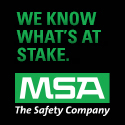
| www.agc.org • July 2015 |
Contact Us Archives
Subscribe Printer-Friendly AdvertiseSafety and HealthFacebook |
Creating a Heat Illness Prevention Program By Erik Wenstone
CMR Risk & Insurance Services, Inc.
The summer months are upon us and with that the heat index will begin to soar, creating a safety hazard for all contractors and their employees. Regulatory agencies such as OSHA are cracking down on heat-related illness and strictly enforcing the regulations in place to prevent these injuries. As a contractor it is critical for the safety of your employees to have in place, an effective and properly implemented Heat Illness Prevention Program that is accepted, taught, monitored, and altered as needed throughout the hot summer months and beyond, as is applicable.
The following are key components that should be considered and included when creating an effective heat illness prevention plan:
1. Purpose – Make clear the purpose of this plan, which should be in line with the prevention of heat-related illness while meeting the requirements set forth in the applicable standard. It should establish the various sections of the plan that will be incorporated and are necessary to prevent and recognize heat illness.
2. Definitions – The program should be clear in defining key words used throughout the plan. This would include words such as acclimatization, heat illness, personal risk factors for heat illness, temperature, etc. By defining these key aspects, you are eliminating confusion or incorrect interpretation that could lead to a loss. 3. Responsibilities – As with any effective plan, responsibilities need to be established and defined. It is here you need to specifically identify positions within your organization (e.g., risk manager, safety coordinator, foreman, supervisors) while outlining their duties as they relate to implementation, training, and monitoring of the plan ensuring its effectiveness. 4. Requirements – This will be the "guts" of your overall plan. This section should include all the basic requirements required including:
5. Procedures – This section should address the procedures in place when a hazard is identified and puts the above-noted requirements to action. This would include, but is not limited to your action plan and notification requirements upon identifying an employee experiencing symptoms of heat illness. It is here that you should bullet point each aspect of your plan that is meant to prevent heat illness. For instance, note the amount of water that will be available to employees over a certain period time or the allowance of rest periods.
6. Training – Any plan is only as good as its implementation and to do this you must train all employees that could be affected by heat illness. This section should make clear the intentions of your training program for all employees. It should outline the added training for supervisors given the added responsibilities in the identification of hazards, emergency response, training, etc. 7. Audits – For any plan to succeed long term it is critical the program be audited annually to review and ensure all procedures and reports are being completed as outlined in the plan. An audit report should be prepared as part of this program outlining the results and action plan, if any, needed to better implement the plan or suggestions for improvement based on each organization’s needs and exposures while maintaining the requirements of the standard. Now that the plan is in place, put it to use, but be sure that key training topics are being incorporated into your plan. The most important one is the overview of the plan with all applicable employees, but secondary to that, the employees should have a clear understanding of the various types of heat illnesses including how to recognize them based on an individual’s symptoms.
As a quick review, the major types of heat illness from least severe to most severe include:
Other important training topics should be on the precautions and conditioning of your body to prepare for high temperature situations. While there are numerous training documents available to you, we feel these are just a couple that should be incorporated as part of the training section of your plan.
The above is meant to be a brief overview of the steps and components needed to create an effective heat illness prevention plan including some sample training topics to consider. The hazard is real so putting a plan in place will further secure the safety of your employees and guarantee they return home each day from the jobsite. Erik Wenstone is vice president of CMR Risk & Insurance Services, Inc., an AGC San Diego Chapter member.
|
|||
 2300 Wilson Boulevard, Suite 300 · Arlington, VA 22201 · 703-548-3118 (phone) · 703-548-3119 (fax) · www.agc.org
2300 Wilson Boulevard, Suite 300 · Arlington, VA 22201 · 703-548-3118 (phone) · 703-548-3119 (fax) · www.agc.org
About AGC | Advocacy | Industry Topics | Programs and Events | Career Development | News & Media
© Copyright 2025 The Associated General Contractors of America. All rights reserved.

